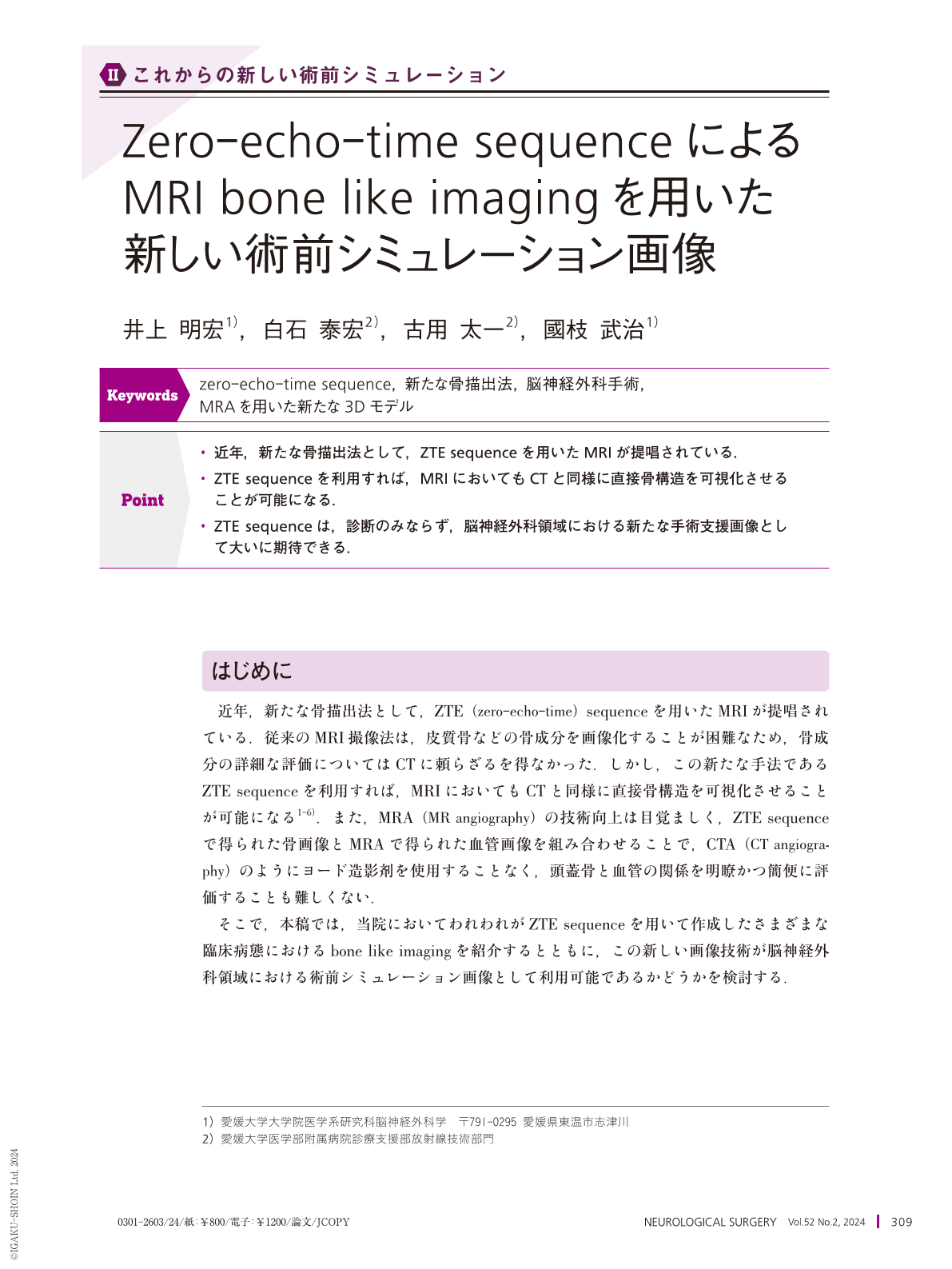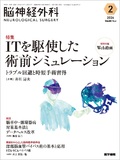Japanese
English
- 有料閲覧
- Abstract 文献概要
- 1ページ目 Look Inside
- 参考文献 Reference
Point
・近年,新たな骨描出法として,ZTE sequenceを用いたMRIが提唱されている.
・ZTE sequenceを利用すれば,MRIにおいてもCTと同様に直接骨構造を可視化させることが可能になる.
・ZTE sequenceは,診断のみならず,脳神経外科領域における新たな手術支援画像として大いに期待できる.
This study aimed to evaluate the clinical usefulness of zero-echo time(ZTE)-based magnetic resonance imaging(MRI)in planning an optimal surgical approach and applying ZTE for anatomical guidance during transcranial surgery. P atients who underwent transcranial surgery and carotid endarterectomy and for whom ZTE-based MRI and magnetic resonance angiography(MRA)data were obtained, were analyzed by creating ZTE/MRA fusion images and 3D-ZTE-based MRI models. We examined whether these images and models could be substituted for computed tomography imaging during neurosurgical procedures. Furthermore, the clinical usability of the 3D-ZTE-based MRI model was evaluated by comparing it with actual surgical views. ZTE/MRA fusion images and 3D-ZTE-based MRI models clearly illustrated the cranial and intracranial morphology without radiation exposure or the use of an iodinated contrast medium. The models allowed the determination of the optimum surgical approach for cerebral aneurysms, brain tumors near the brain surface, and cervical internal carotid artery stenosis by visualizing the relationship between the lesions and adjacent bone structures. However, ZTE-based MRI did not provide useful information for surgery for skull base lesions, such as vestibular schwannoma, because bone structures of the skull base often include air components, which cause signal disturbances in MRI. ZTE sequences on MRI allowed distinct visualization of not only the bone but also the vital structures around the lesion. This technology is minimally invasive and useful for preoperative planning and guidance of the optimum approach during surgery in a subset of neurosurgical diseases.

Copyright © 2024, Igaku-Shoin Ltd. All rights reserved.


